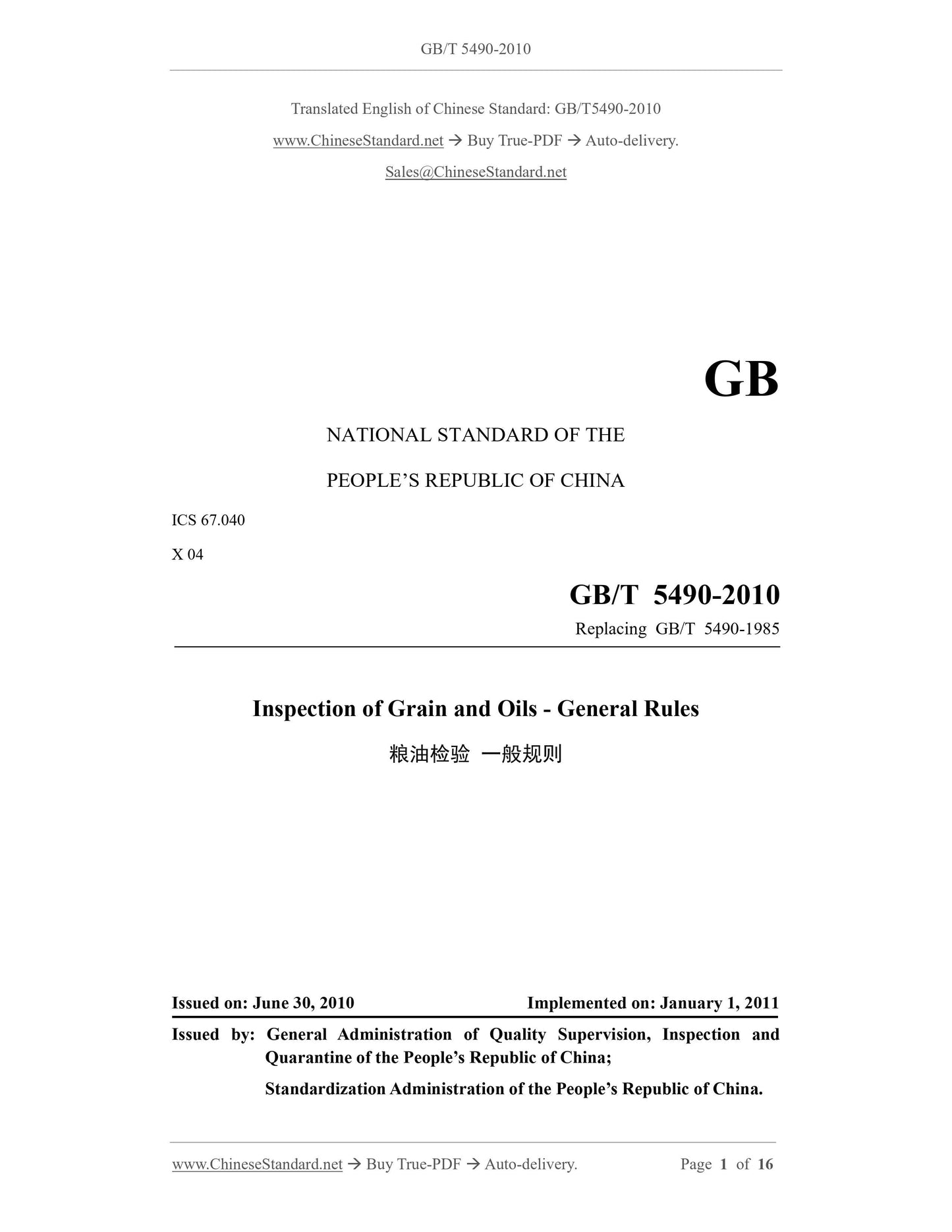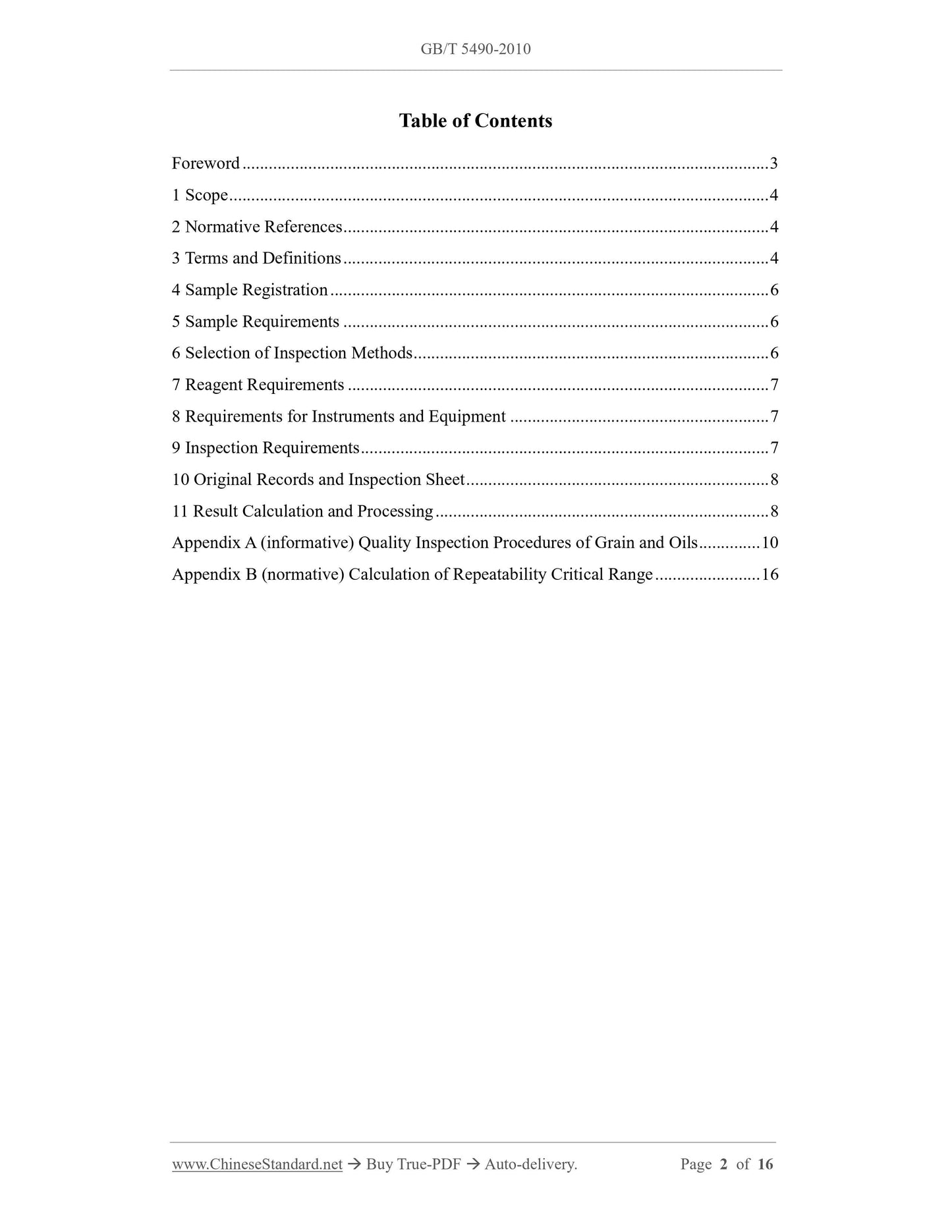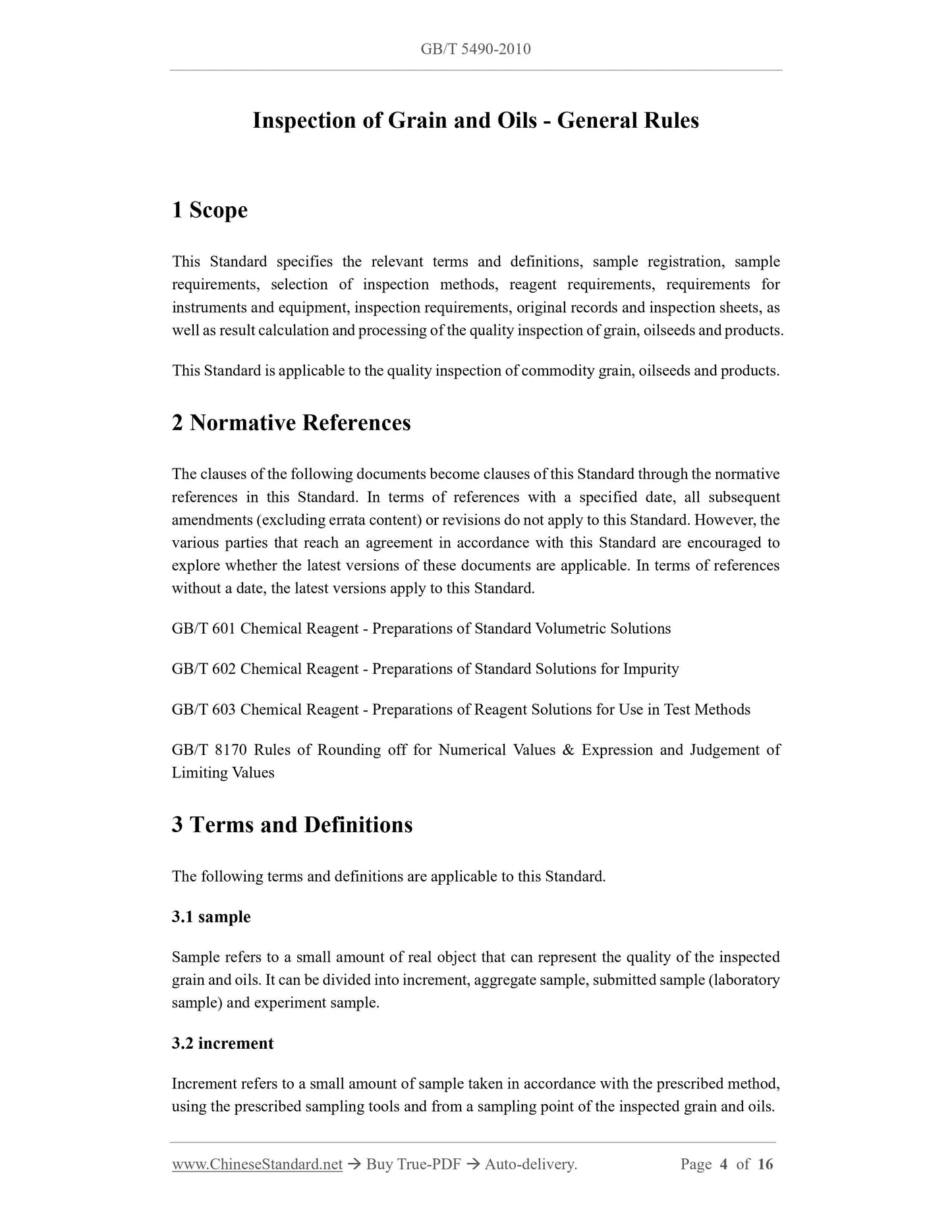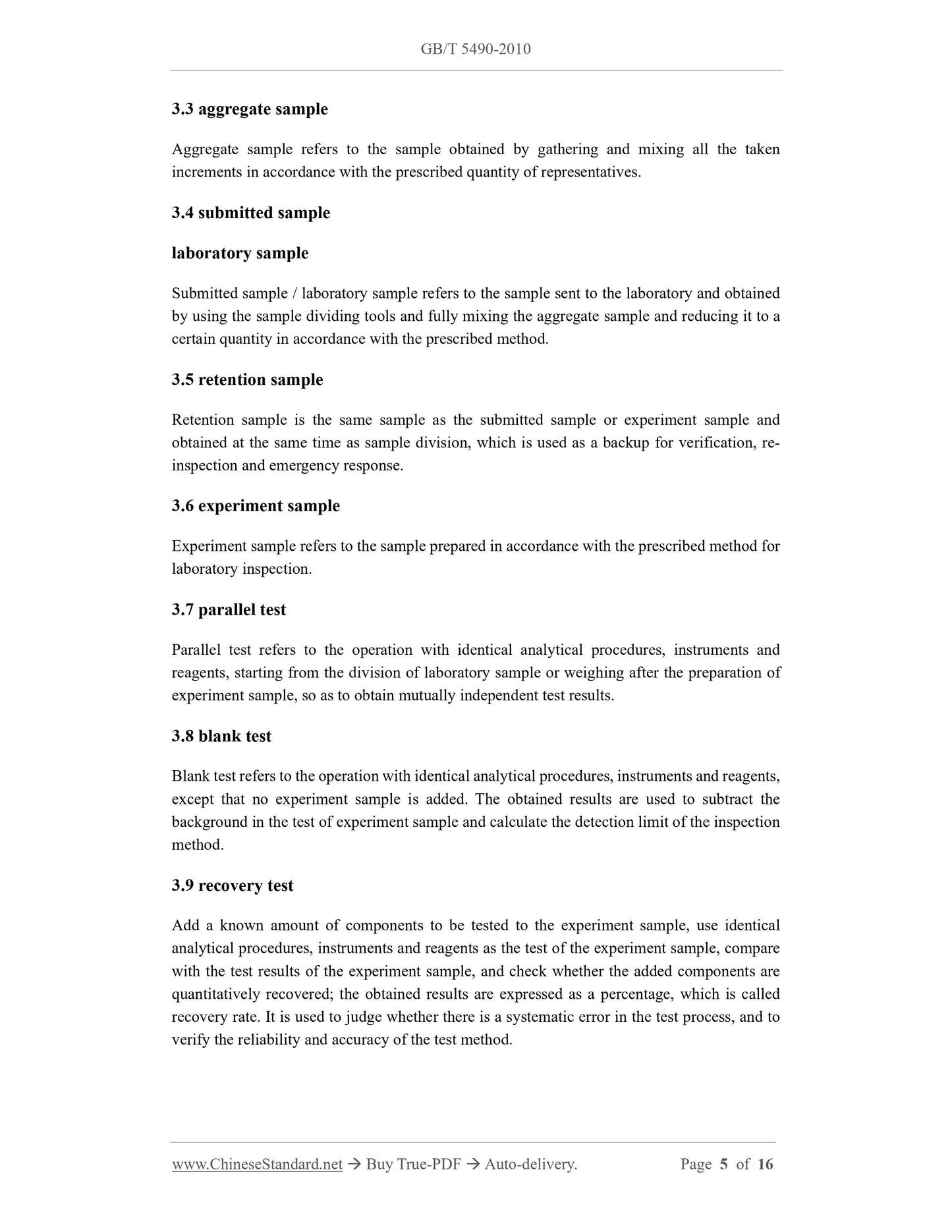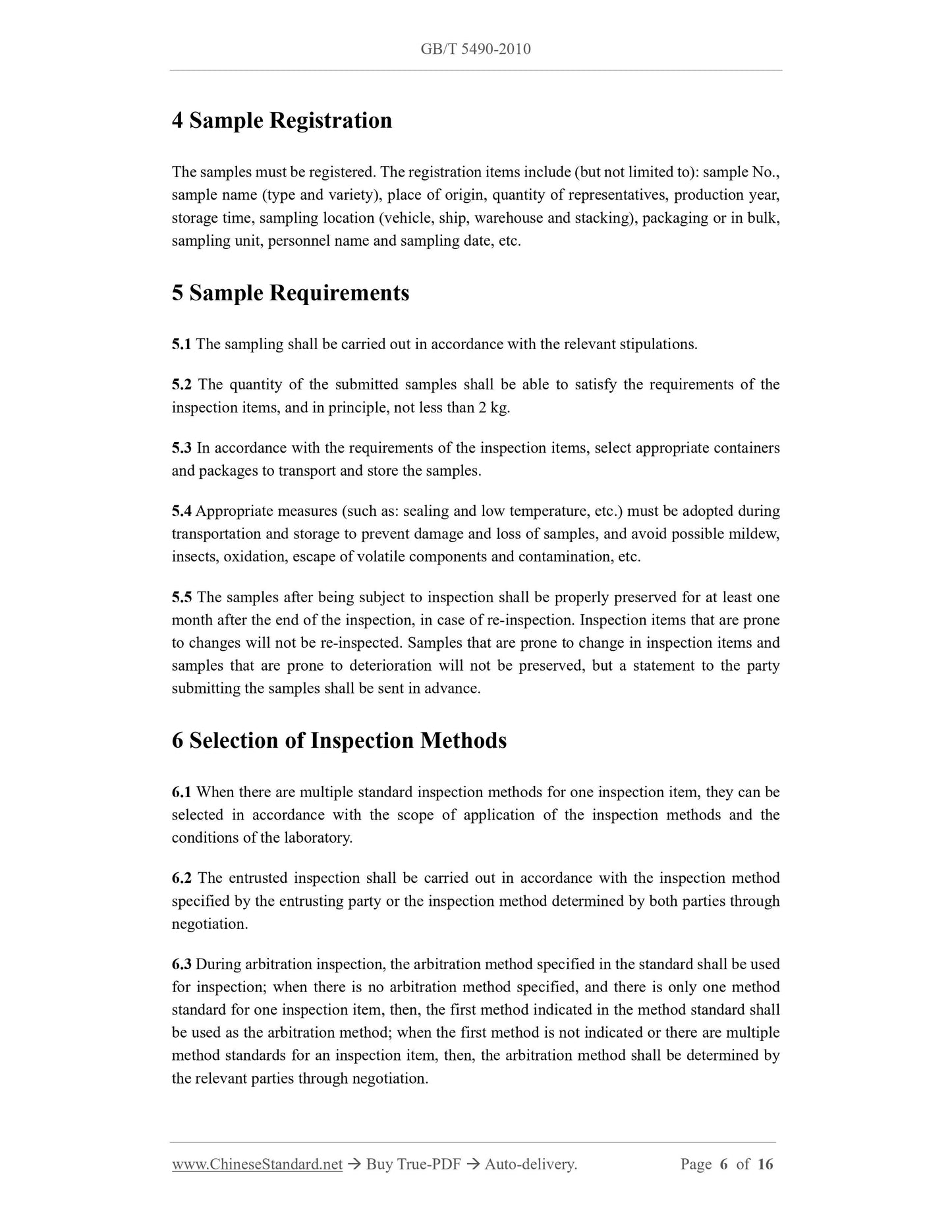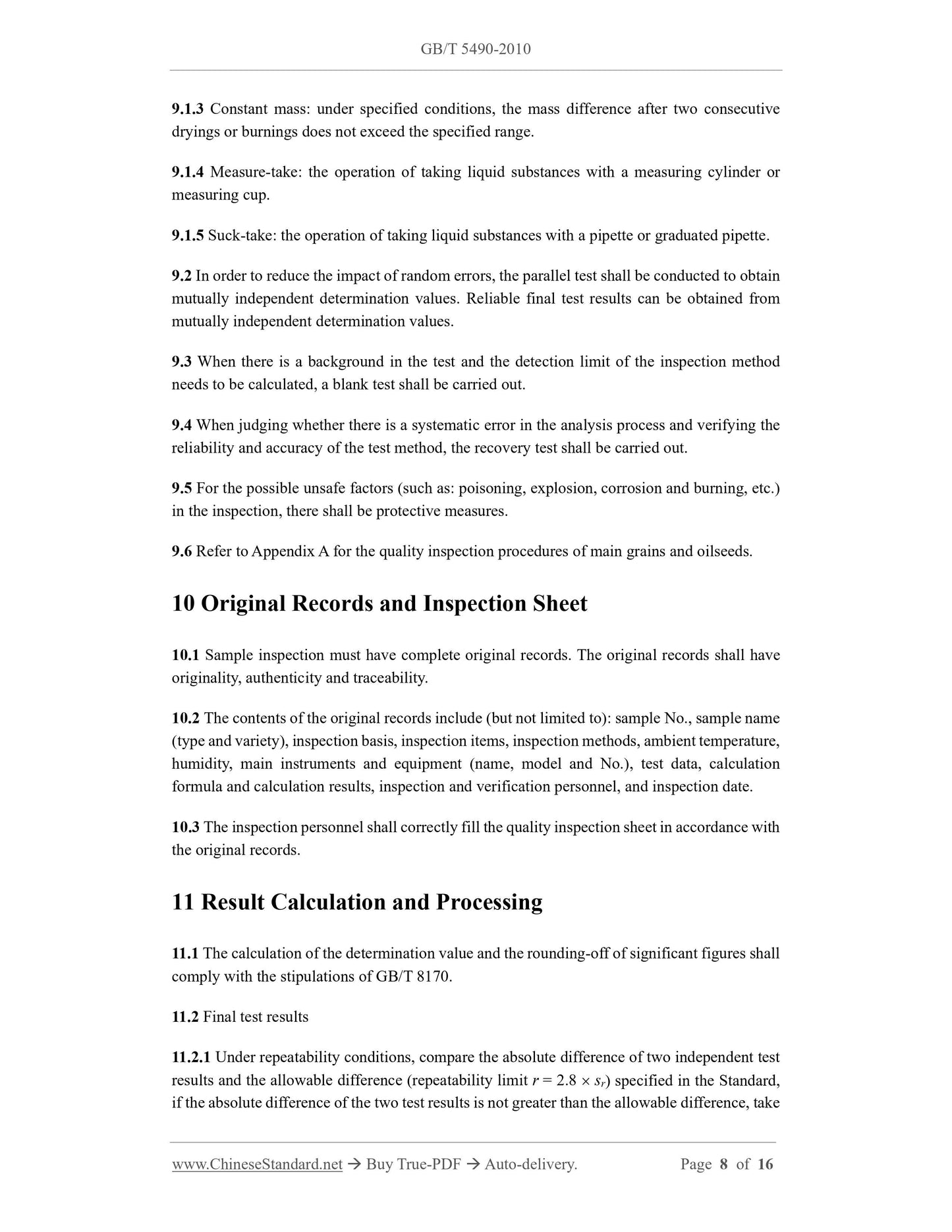1
/
of
6
www.ChineseStandard.us -- Field Test Asia Pte. Ltd.
GB/T 5490-2010 English PDF (GB/T5490-2010)
GB/T 5490-2010 English PDF (GB/T5490-2010)
Regular price
$230.00
Regular price
Sale price
$230.00
Unit price
/
per
Shipping calculated at checkout.
Couldn't load pickup availability
GB/T 5490-2010: Inspection of grain and oils - General rules
Delivery: 9 seconds. Download (and Email) true-PDF + Invoice.Get Quotation: Click GB/T 5490-2010 (Self-service in 1-minute)
Newer / historical versions: GB/T 5490-2010
Preview True-PDF
Scope
This Standard specifies the relevant terms and definitions, sample registration, samplerequirements, selection of inspection methods, reagent requirements, requirements for
instruments and equipment, inspection requirements, original records and inspection sheets, as
well as result calculation and processing of the quality inspection of grain, oilseeds and products.
This Standard is applicable to the quality inspection of commodity grain, oilseeds and products.
Basic Data
| Standard ID | GB/T 5490-2010 (GB/T5490-2010) |
| Description (Translated English) | Inspection of grain and oils - General rules |
| Sector / Industry | National Standard (Recommended) |
| Classification of Chinese Standard | X04 |
| Classification of International Standard | 67.040 |
| Word Count Estimation | 12,115 |
| Date of Issue | 2010-06-30 |
| Date of Implementation | 2011-01-01 |
| Older Standard (superseded by this standard) | GB/T 5490-1985 |
| Quoted Standard | GB/T 601; GB/T 602; GB/T 603; GB/T 8170 |
| Regulation (derived from) | National Standard Approval Announcement 2010 No.2 (Total No.157) |
| Issuing agency(ies) | General Administration of Quality Supervision, Inspection and Quarantine of the People's Republic of China, Standardization Administration of the People's Republic of China |
| Summary | This standard specifies the food, quality oils and products of inspection -related terms and definitions, sample registration, Sample requirements, Inspection Methods, reagent requirements, instruments and equipment requirements, inspection requirements, single original records and the results of the calculation and testing and treatment. This standard applies to commodity grain, quality oils and products testing. |
Share
